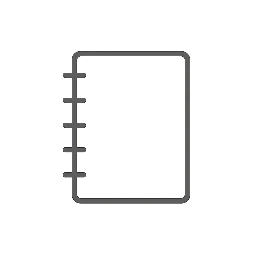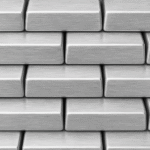Basement leaks are a common issue for homeowners in Toronto due to the city’s climate and soil conditions. Identifying and repairing leaks early can prevent extensive water damage, mold growth, and structural problems. Toronto basement leak repair focuses on stopping water seepage using proven waterproofing techniques tailored to foundation cracks and moisture issues.
Effective leak repair requires a thorough inspection to pinpoint the source of water intrusion. Local experts use a combination of interior and exterior methods, including sealing cracks, installing drainage systems, and applying waterproof coatings, to ensure lasting protection. Many Toronto services offer free quotes and prioritize quick, reliable responses to minimize damage.
Understanding the risks and solutions associated with basement leaks helps homeowners protect their property investment. Those facing persistent or sudden leaks need professional intervention to maintain a dry, safe basement environment and avoid costly repairs in the future.
Common Causes of Basement Leaks in Toronto
Basement leaks in Toronto typically stem from a few key issues related to water pressure, structural integrity, and drainage. Understanding these factors helps homeowners identify vulnerabilities and address problems effectively.
Hydrostatic Pressure and Water Table Issues
Toronto’s climate often leads to high water tables, especially during spring thaw and heavy rains. When the soil around a basement becomes saturated, water pressure builds against foundation walls, known as hydrostatic pressure.
This pressure forces water through small cracks or porous concrete, causing leaks. Basement floors can also become wet as water pushes up through the slab if there is no proper moisture barrier.
Managing hydrostatic pressure often requires exterior waterproofing, proper grading, and ensuring soil does not hold excess moisture near the foundation. Without addressing this pressure, basement leaks will likely continue or worsen over time.
Foundation Cracks and Structural Damage
Foundation cracks are one of the most common entry points for water into Toronto basements. These cracks can develop from soil movement, freeze-thaw cycles, or natural settling of the home.
Even small cracks allow water to seep in, which can grow larger without repair. Over time, these openings can compromise the foundation’s structural integrity, increasing the risk of more severe leaks and costly repairs.
Regular inspections and timely crack repair—using hydraulic cement or epoxy injection—are critical. In some cases, professional assessment is needed to rule out larger structural issues.
Improper Drainage Systems
Drainage issues around the home significantly contribute to basement leaks in Toronto. Blocked or poorly maintained gutters, downspouts, and surface drains can funnel water toward the foundation rather than away.
Inadequate grading where the ground slopes toward the house increases the risk of water pooling near the basement walls. This excess water can overwhelm drainage systems and penetrate the basement.
To prevent leaks, homes need properly functioning gutters and downspouts directing runoff at least 6 feet from the foundation. Grading should slope away from the house, and French drains or sump pumps can help manage excess water.
Window Well and Door Entry Points
Basement windows and entry doors are frequent weak spots for water intrusion. Window wells can collect rainwater or melting snow, especially if they lack proper drainage or covers.
Water trapped in window wells often seeps into the basement through window frames or seals. Similarly, basement doors that are not weatherproofed or have damaged seals can allow water to enter during heavy precipitation.
Maintaining and inspecting window wells for debris, ensuring drains are clear, and installing proper seals on doors reduce the risk. Adding window well covers and door thresholds can provide an extra layer of protection.
Effective Solutions for Basement Leak Repair
Basement leak repair requires targeted methods based on the leak’s source and severity. Solutions often involve waterproofing, structural repairs, water management devices, and maintenance to prevent recurring problems.
Interior and Exterior Waterproofing Methods
Interior waterproofing typically involves sealing walls and floors with waterproof coatings or membranes. This method addresses minor seepage by creating a barrier inside the basement, preventing water from entering living spaces. Drainage systems like interior French drains may be installed to channel water to a sump pump.
Exterior waterproofing is more comprehensive and involves excavating around the foundation. Professionals apply waterproof membranes or coatings on the outside walls and may add drainage mats and weeping tiles. This solution redirects water away from the foundation and is effective for significant leaks or structural water pressure.
Crack Injection and Foundation Sealing
Cracks in basement walls or floors are common leak points. Crack injection involves injecting epoxy or polyurethane resins into the cracks to seal gaps and restore structural integrity. Epoxy is preferred for dry cracks, while polyurethane works well with active water leaks due to its flexibility and expansion.
Foundation sealing may include applying cementitious coatings or sealants that bond to concrete surfaces. These materials fill pores and small fissures, preventing water penetration. Both crack injection and sealing improve the durability of the foundation and reduce water infiltration risks.
Sump Pump Installation and Maintenance
Sump pumps are critical for managing groundwater buildup under or around a basement. Installed in sump pits, they actively pump accumulated water away from the foundation to a safe drainage area. This prevents water from rising and causing basement flooding.
Regular maintenance of sump pumps includes testing the device, cleaning the pit, and checking the discharge lines. Backup power sources like battery systems ensure operation during power outages. Properly maintained sump pumps extend basement protection and reduce water damage risks.
Preventative Measures and Long-Term Care
Preventative measures reduce the risk of basement leaks and structural damage. These include ensuring proper grading of the soil away from the foundation, maintaining clean gutters and downspouts, and inspecting seals around windows and doors regularly.
Long-term care involves routine inspections of waterproofing systems, crack monitoring, and maintaining negative hydrostatic pressure outside the foundation. Early detection and repair of small issues prevent costly repairs later. Homeowners benefit from professional assessments to keep waterproofing measures functional.









Leave a Reply